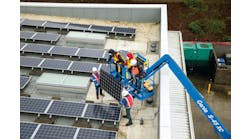Nonfarm payroll employment, led by a 56,000-job increase in construction, rose 180,000 in March, seasonally adjusted, according to the Bureau of Labor Statistics. The construction gain almost completely reversed a weather-related drop of 61,000 in February. Construction employment has risen 0.3 percent since March 2006, compared to total employment increasing 1.4 percent in that time period. However, employment in nonresidential building, specialty trades, and heavy and civil engineering has added 146,000 jobs in that period, about a 3.4-percent increase, while residential building and specialty trades lost 129,000 jobs, a 3.6-percent clip.
“Construction was the sparkplug for last month’s employment engine,” said Ken Simonson, chief economist for the Associated General Contractors of America. “Construction accounted for nearly one out of three net new jobs in March — 56,000 out of 180,000 in the entire non-farm payroll sector — even though the industry represents less than 6 percent of total employment.
“Part of the gain was a bounceback from a weather-induced dip in hiring in February. But the real news lied buried deeper. The three categories of nonresidential construction — nonresidential building, specialty trade contractors, and heavy and civil engineering — have added 3.4 percent to their ranks over the past year. That is more than double the all-industry rate of 1.4 percent.”
Simonson predicted nonresidential hiring will continue if companies can find qualified workers.
“Construction spending reports for February were strongly positive, aside from single-family homebuilding, and most of those projects will continue for months. Energy and power, hotels and resorts, and hospitals look especially vibrant for construction,” Simonson said. “Costs are a significant concern, however, especially for public projects.
“The jobs report showed hourly wages in construction rose 5.2 percent, compared to 4 percent for all private production and nonsupervisory employees. More worrisome are recent jumps in prices of steel, stainless, copper and diesel fuel. Materials and components are likely to wind up the year at least 6 to 8 percent higher than in December 2006.”





